Well considering that the war started in 1914 he could have been conscripted at an earlier point, sometime around 1915-16 most likely. That if he didn't enlist himself out of nationalist or Patriotic fervor, though probably tainted with some racism against the "southron mongrels".HP Lovecraft would be 27 in 1917, that's not too old if he enlisted but I'm not sure if would be drafted at that age but its possible. I think the cut-off point for the draft in WWII was early or mid 30's, probably the same for WWI.
You are using an out of date browser. It may not display this or other websites correctly.
You should upgrade or use an alternative browser.
You should upgrade or use an alternative browser.
Photos from Featherston's Confederacy/ TL-191
- Thread starter Alternatehistoryguy47
- Start date
-
- Tags
- the rising sun
Lol! I forgot the US entered WWI in 1914 in TL-191 like most of the other combatants did. Yeah I think your idea is plausible and it was never mentioned what the acceptable age for enlistment was or what the cut-off point was in TL-191.Well considering that the war started in 1914 he could have been conscripted at an earlier point, sometime around 1915-16 most likely. That if he didn't enlist himself out of nationalist or Patriotic fervor, though probably tainted with some racism against the "southron mongrels".
Aerial view of the city of Paetūmōkai, New Zealand, near Lake Wairarapa
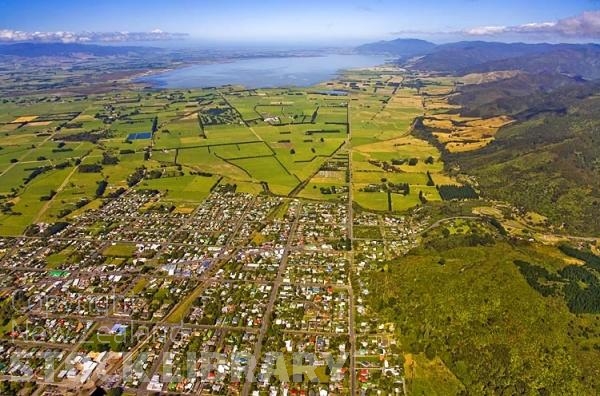
From 1856 to 1945, the city was originally named "Featherston", in honor of Isaac Featherston, a New Zealand politician who was not related to the infamous Jacob Featherston of the Confederate States.
Since the name Featherston was now and forever will be associated with pure evil, the city decided it was appropriate to rename it. This caught the attention of the USA and was one of the starting points in developing a good relationship between New Zealand and the United States.
Source:
https://www.newzealandstocklibrary....mutaka_Hill;Fell_Locomotive_Museum;nativ.html
https://en.wikipedia.org/wiki/Featherston,_New_Zealand

From 1856 to 1945, the city was originally named "Featherston", in honor of Isaac Featherston, a New Zealand politician who was not related to the infamous Jacob Featherston of the Confederate States.
Since the name Featherston was now and forever will be associated with pure evil, the city decided it was appropriate to rename it. This caught the attention of the USA and was one of the starting points in developing a good relationship between New Zealand and the United States.
Source:
https://www.newzealandstocklibrary....mutaka_Hill;Fell_Locomotive_Museum;nativ.html
https://en.wikipedia.org/wiki/Featherston,_New_Zealand
Well considering that the war started in 1914 he could have been conscripted at an earlier point, sometime around 1915-16 most likely. That if he didn't enlist himself out of nationalist or Patriotic fervor, though probably tainted with some racism against the "southron mongrels".
Maybe he gets killed during the First Great War or his career as a writer never occurs due to different life choices.
Hey, just putting this here if it belongs here.
Don't know if this kind of thing belongs here, but here it goes! Cookie and kudos to whoever correctly guesses the allusion to a certain OTL game released on the release date mentioned here
Medal of Honor (2001)

By the early 2000s, competition within the first-person shooter market was starting to increase dramatically, with the genre dominated by sci-fi games. In 1998, developers at a new gaming studio decided to create a brand new first-person shooter IP set in the Second Great War. The idea of setting a game in the Second Great War, especially the war in North America the between United States and the former Confederate States, did not sit well with publishers and developers within the studio at the time and many on the team were highly reluctant to do take part in the project. Sci-fi shooters were considered a "safe" genre to put shooters in and the few new IPs that attempted to set their games in the Second Great War sold poorly, especially on PC. To set a game in that time period and sell it to both the old PC and new console market was deemed too risky. With such a controversial setting the publishers feared it would not sell well in the Southern States or the Northern States and the possibility of enflaming Neo-Freedomite and Neo-Revaunchist groups was a real possibility.
The lead group pushing for this idea, however, managed to convince the rest of the development team to get on board after showing preliminary sketches, story drafts, and other notes in order to get their vision for the game across. By 1999, development on the game was well under way, with the studio taking some time to iron out the story concepts, graphics, game mechanics, and controls. Two military advisors and a number of historians were called in on the project to oversee certain aspects of development and provide a level of direction for the team in terms of authenticity. Friction between the two advisors early in development however nearly resulted in the entire project coming to a halt as the two men were former combatants who served on opposite sides of the war - a retired US army colonel and a former Confederate captain. Surprisingly it was the retired US colonel that criticized the game, saying it was a "dishonorable project". Even more surprising was that the former Confederate captain was able cooperate with the leading team in order to convince the colonel to continue advising the project, saying "it is more dishonorable to let the memory of those horrible times be repressed and manipulated by those who would make us fear the past."
More resistance to the project came in the form of a medal of honor recipient criticizing the project, going as far as to call out the dev team as "southern apologists" and "closet Freedomites" due to the small number of southerners working on the project. This time the recipient threatened to close down the project entirely, sending the publishers into frenzy, worrying that such negative attention ruin them. Once again, with help from the entire team, the medal of honor recipient was given a demonstration and a sneak peak at the game during it development. With help from the advisors in particular, the recipient backed down and went so far as to support the games release based on what he saw. This saved the game from complete cancellation.
Finally, on November 15, 2001 the game was released to the public on the American console system Playbox and PC, to the frustration of gamers who owned the German gaming system DreamCore. Contrary to fears and beyond the development teams' expectations the game received almost universal praise and enjoyed massive sales numbers. Critics praised the title's gameplay mechanics, controls, graphics, soundtrack, and especially multiplayer above all else, citing its fluidity and addicting nature in "putting the Greatest War in history into the hands of gamers". In fact its multiplayer element was its greatest draw for gamers on the Playbox console, who were able to get a unique and addicting multiplayer experience not offered to the same quality as other consoles on the market.

^^^ --- Johnny Peterson, better known as the "Master Sergeant", the player character and main protagonist of the game. As part of the later campaign events to defeat the Confederates in Pittsburgh, he is recruited by the US intelligence service and trained up as a commando to infiltrate behind enemy lines, dressed in a Confederate uniform and armed with a Tredegar Automatic Rifle. Players quickly grew to love his character and critics
The single player campaign was also highly praised for its in-depth, gritty, gripping, and emotional story. Starting off in the year 1942, the player is cast as a US soldier named Johnny Peterson on the front lines in Pennsylvania, thrown into the Battle of Pittsburgh at the height of its intensity as the Confederates drive hard into the city. Through numerous battles across the city and surrounding area the player as Johnny experiences the battle first hand, fighting Confederates street by street, field by field, and house by house.

^^^ --- Mary Adams, secondary protagonist of the game. A native of Pittsburgh, she was originally a factory worker, but earned her gun by fighting off Confederates in the factory districts of the city along side US soldiers, being a worker when there was no fighting and a soldier when there was. The player as Johnny Peterson meets her during a mission to defend the factory she works at from a Confederate assault. She quickly became a popular character among fans and was highly praised by critics.
The player character, after numerous battles within the city fighting along side his squad and Mary, is eventually wounded in action. While recovering he is recommended by his superiors to join an elite commando group to infiltrate behind Confederate lines in advance of a massive counter offensive to encircle the enemy. Disguised as a Confederate soldier the player infiltrates behind enemy lines and wreaks havoc, opening the way for a push by US soldiers to start the encirclement of the city.
The game ends with the player victorious, looking west toward Ohio, into an uncertain yet hopeful future.

^^^ --- Loading screen from the game, showing a US soldier atop a destroyed Confederate barrel.
The game would go on to spawn several sequels, with the second and third installments being even more massively successful than the first title, putting the player character on the front lines to liberate Ohio and eventually take part in Operation Rosebud. The game also inspired many "copycats" and that hoped to "kill" the franchise and become the next big game. It effectively ended the dominance of sci-fi shooters in the market, practically creating the "Second Great War FPS" overnight with its popularity. Its success also encouraged gaming studios to finally branch out and tackle the Second Great War as viable setting for future games.
For example, in Germany, the most famous and most successful of the "copycats" inspired by Medal of Honor was the Cross of Iron franchise that was released in 2003 to massive success Europe and North America, effectively becoming Medal of Honor's rival in the market place. Cross of Iron takes place in 1941 on the "Ost Front" against the Russians in Poland, Ukraine, and Germany, with players experiencing the battles on that front in a similar fashion as Medal of Honor.
Another title that originally released in Japan on the Saigo's new Gameblok that also took influence from Medal of Honor was called Journey to Palace Amarapura, a Second Great War game that had a heavy occult-fantasy twist to it that allowed for different type of gameplay. It centered on a Japanese special forces unit tasked with infiltrating India and defeating a British Silver Shirt occult organization bent on harnessing the power of the Hindu gods to conquer the rest of the world for the monarch of Britain. Although not historically accurate in the slightest, it also received massive success in Asia.
Medal of Honor had since gone down in history as being one of the most influential games of all time.
@Alterwright, will we be seeing any more Reputations post soon? Those are the best in my eyes.
The Moscow Kremlin Fabergé egg of 1906. Fabergé eggs, created by the House of Fabergé, for the Russian Imperial Family each Easter, would be world renown for them as well as many other jewellery items. During the Russian Civil War, several eggs was lost, and some later rediscover.
Following the end of the Russian Civil War, Alexander Julius Fabergé would continued the Fabergé eggs tradition for Tsar Nicholas II and later Mikhail II. When St. Petersburg was hit by an Superbomb, several more eggs was lost and are yet to be recover.
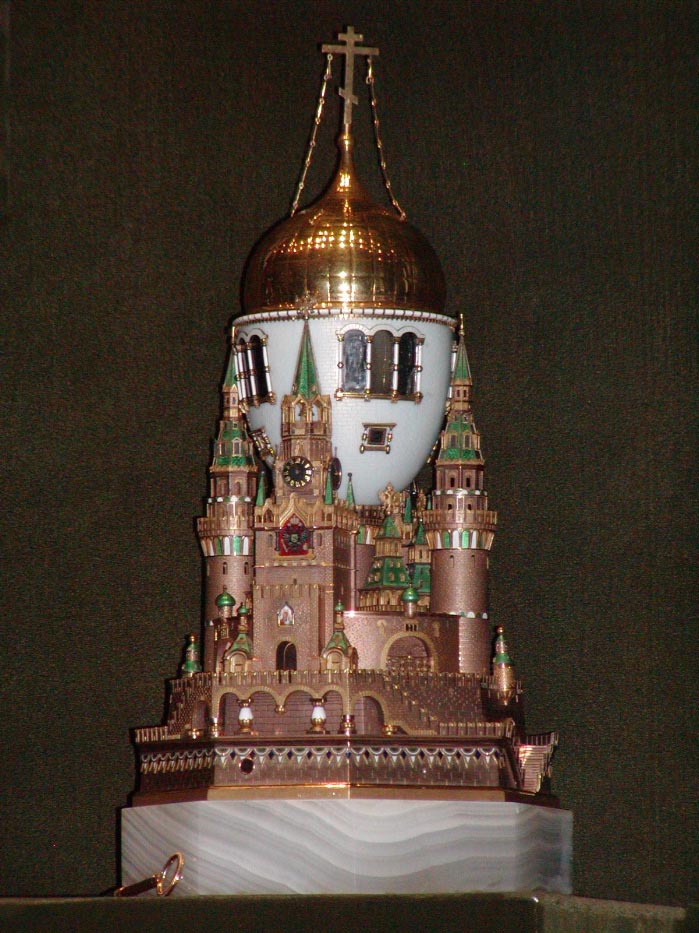
Following the end of the Russian Civil War, Alexander Julius Fabergé would continued the Fabergé eggs tradition for Tsar Nicholas II and later Mikhail II. When St. Petersburg was hit by an Superbomb, several more eggs was lost and are yet to be recover.

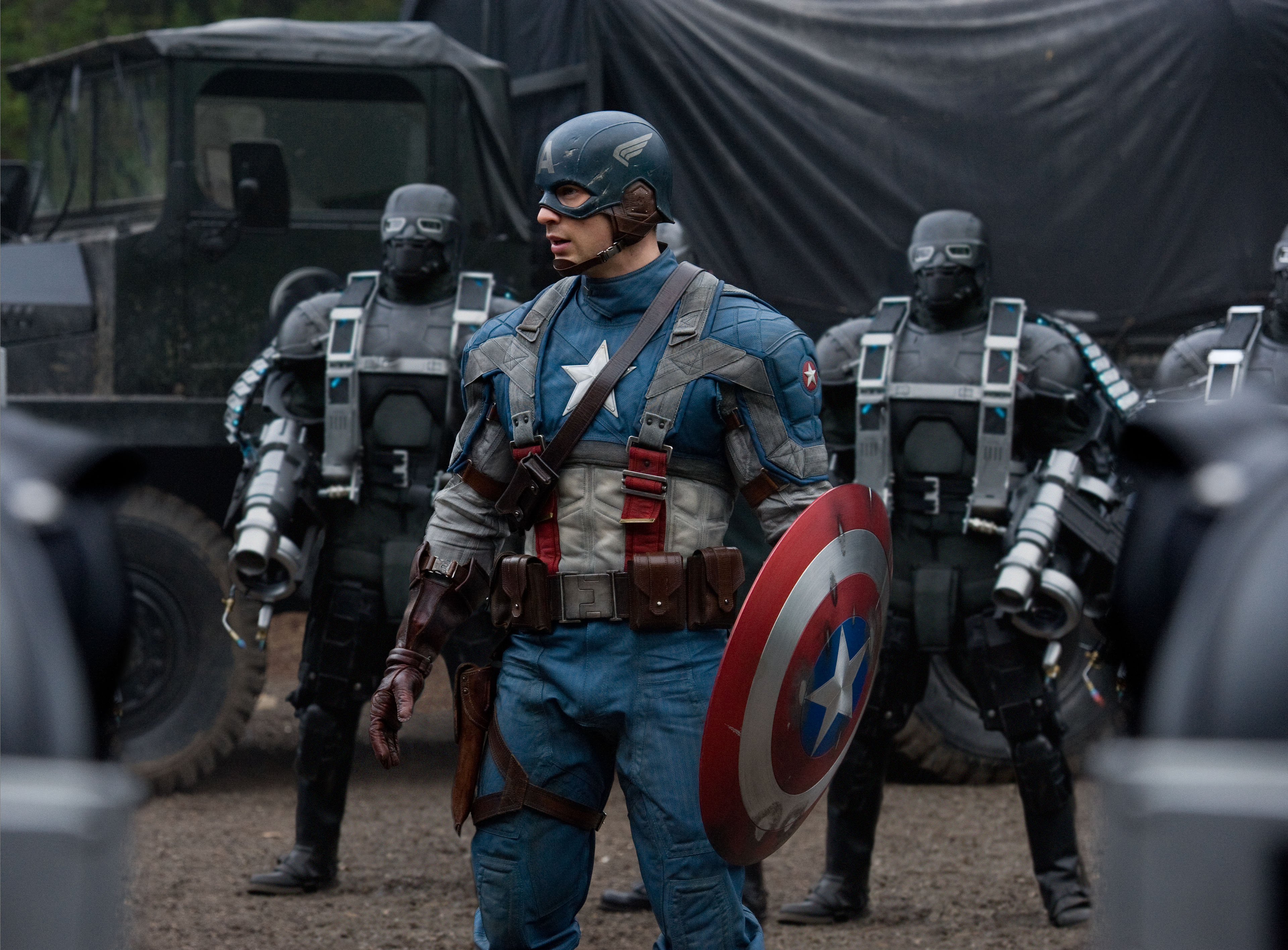
Promotional still from the 2011 film Colonel Union: Walk In Hell
Colonel Union, the iconic red, white, and blue clad boy from New York who would go on to be a cornerstone of american pop-culture, started life in the pages of MLJ Magazines as a rejected advertising mascot for the Boy Scouts of America back in 1938. The youthful patriotically theme character design would catch the eye of one Stanley Kirby, a colourist for many of the cartoons published by MLJ. Taking the ques from the flag theme mascots, Kirby refined the design before enlisting his friend and writer Irv Simon to craft a story which they pitched to the editors of MLJ Magazines. Together they pitched the story of Stephen Higgins, a sickly young man from New York's Lower East Side who's father is murdered by Freedomite thugs but not before passing on his secret to his son, a miracle dug that granted Stephen incredible powers. Driven by a desire to defend the helpless and seek justice for his fathers killers, Higgins would become Colonel Union.
With tensions between the USA and Featherston's CSA rising daily, MLJ Magazines (now going under the name Wonder Comics) wanted to cash in on the rising patriotic wave rising in the US and quickly approved the comic for publication. Colonel Union was an instant success and become one of Wonder Comics flagship properties, along side their Sentinels of Liberty team book, and spawning countless cartoons and movie adaptions.
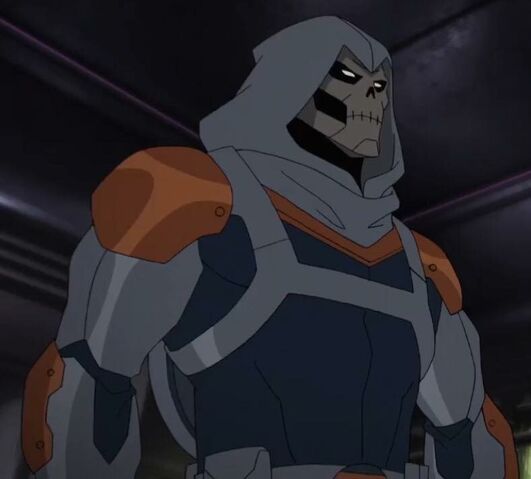
Buchanan Barnes, aka The White Skull, has been Colonel Union's longest and most memorable foes. Originally a simple henchman with an interesting mask, Barnes would later be rewritten and upgraded to be Higgin's greatest nemesis, the man behind his fathers murder and failed copy of experiment that gave Higgins.
OOC: So yeah, Timeline-191 Captain America. I decided to blend of The Shield into the mix too to add a touch of flavour
Crosspost from the Pop-culture of TL-191
I made this poster that would have been used during the C.S. election of 1933. I know it's not that great, but I wanted to see how it would look like. It has Black-and-White colors, except for the ribbon and the eagle. I imagine this is how the poster would look through a television screen, for the most part.
Last edited:
View attachment 448385
I made this poster that would have been used during the C.S. election of 1933. I know it's not that great, but I wanted to see how it would look like. It has Black-and-White colors, except for the ribbon and the eagle. I imagine this is how the poster would look through a television screen, for the most part.
This would be a good reference for a commissioned poster. You're starting to sell me on the idea of this actor being Jake.
This would be a good reference for a commissioned poster. You're starting to sell me on the idea of this actor being Jake.
My first post, after a greeting, was who I thought Featherston would be portrayed by.
Hello, everyone.
This is my first post on the AHForum and I've decided that it should be about "real" photographs from TL-191.
After reading the books, I have imagined Jacob Featherston to look eerily similar to Eric Stoltz.




Granted, Featherston has brown hair, but it's close enough.
Just my opinion.
My first post, after a greeting, was who I thought Featherston would be portrayed by.
Is Stoltz suppose to be a red-head or blonde? Also, I can't remember what hair color Featherston was suppose to have. I've seen light brown before?
Is Stoltz suppose to be a red-head or blonde? Also, I can't remember what hair color Featherston was suppose to have. I've seen light brown before?
In real-life, he's a redhead. But Featherston is described in the books as having brown hair.
Rebirth of the Kingdom of France: The Orléanist Restoration (1930-1944)
Note: This is a more realistic version of who would rule the Kingdom of France in TL-191. If you're expecting a Charles XI and a Louis XIX, you're not going to read about them. Sorry.
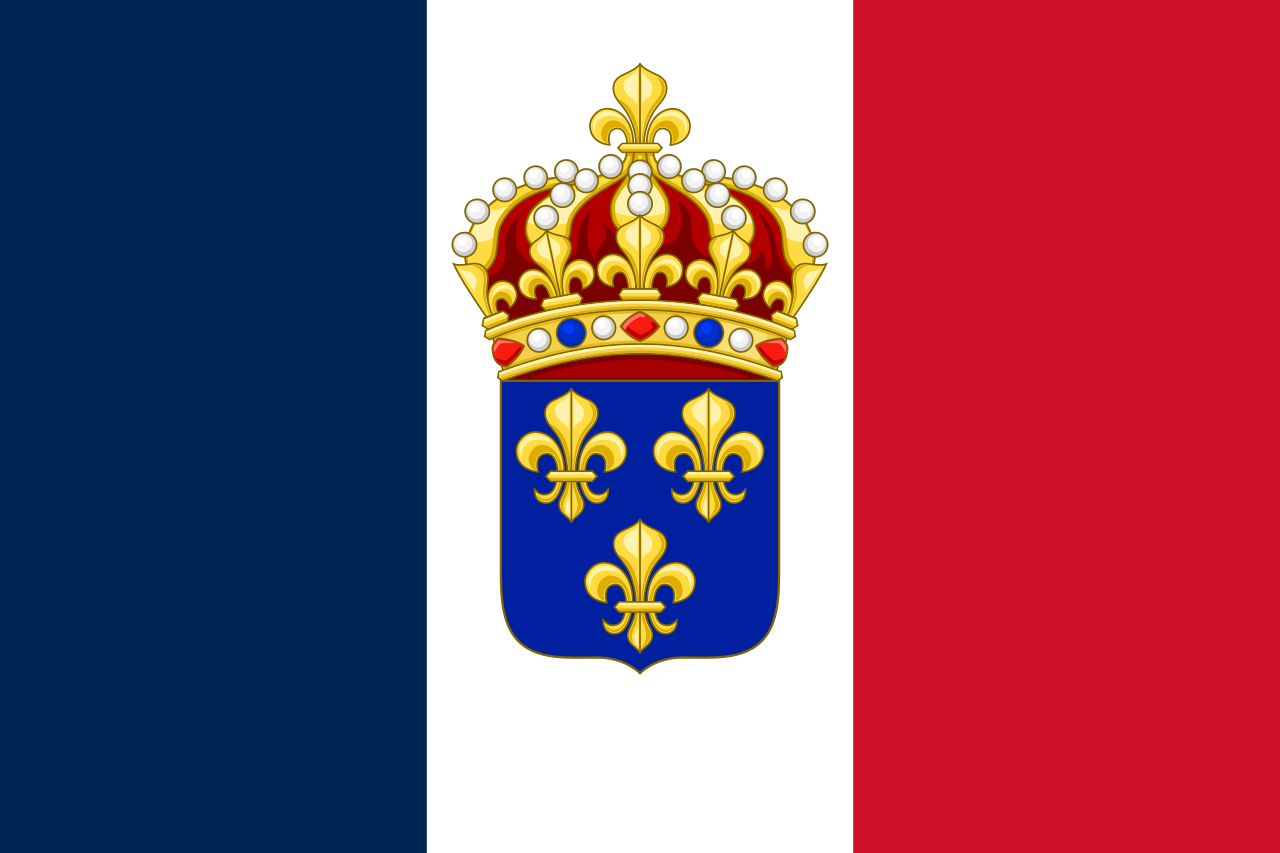
Flag of Actionist France
France was defeated in the First Great War in 1917. This would be the second time since the Franco-Prussian War that France lost against Germany, although their historic enmity stretches back since the 16th Century. The French nation suffered from severe reparations imposed by Germany and the cession of some its territories around the world, such as the entire land of Alsace-Lorraine and some of its colonies in Africa and the Americas. Disillusioned with the military defeat and economic disaster under the establishment of the French government, an Ultra-Royalist organization named Action Française, wanted to transform the Third French Republic into a kingdom, under the control of the House of Orléans.
The House of Orléans has an interesting history within the disputes of royal succession to the French throne. One house among many, the House of Orléans was one of three major groups who claimed to be the rightful monarch of France. After the death of Louis XVIII of France under the Bourbon Restoration, the next King was a younger brother of both Louis XVI and Louis XVIII: Charles X. He ruled from 1824-1830 and then abdicated after the Second French Revolution (July Revolution). Charles X was the last ruling King of France from the House of Bourbon and was succeeded by his cousin, Louis Philippe, who was from the House of Orléans. Despite initial popularity with the people and agreeing to rule France as a constitutional monarch, his lack of success with improving his own country would eventually lead to him being deposed during the Revolutions of 1848. The Second French Republic was proclaimed, then the Second French Empire under Napoleon III, and later the Third French Republic.
Throughout the 1920’s, there was civil unrest in France and was made worse when the stock market crashed. By the beginning of the 1930’s, another revolution occurred and France became a monarchy once again, but this time under the House of Orléans, despite complaints from the Legitimists and Bonapartists. In theory, the monarchy was a limited one, but would eventually become more absolute up until France surrendered in 1944 during the Second Great War.
The King of the French, as he was called, was Jean III and ruled from 1930-1940. His son Henri VI became the next King and would only rule for four years until his death during the Paris Bombing in 1944. A regent on behalf of the son of Henri VI, Henri VII, was able to negotiate peace with Germany.
Throughout the existence of the Kingdom of France under the Orléanists, the King was able to improve his country's economy and sense of national pride. Strong relations with Britain, Russia, and the Confederacy allowed France to be involved in future plans against the victors of the First Great War. The popularity of the demand of plebiscites in the Confederacy in North America, Austria-Hungary and other parts in Europe compelled the French kings to demand that Germany allow the people in previously French territory to decide for themselves who they wanted to be ruled under. When the demand was refused, France, along with its allies, would enter into a war that would cause the end of the French monarchy.
.jpg)
Jean III, King of the French
Royal Wedding of Henri VI, 1931 (Henri VI is shown at 1:09)
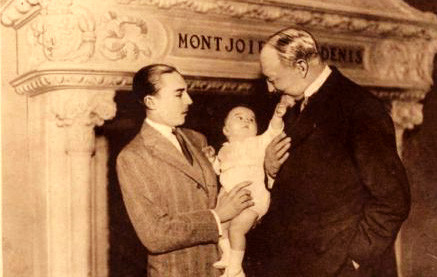
Three generations of the House of Orléans (From Left to Right: Henri VI, Henri VII, and Jean III)
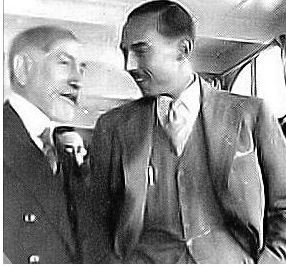
Henri VI with Charles Maurras

Henri d'Orléans, Count of Paris, Duke of France (Orléanist pretender to the now-defunct French throne from 1944-2019)
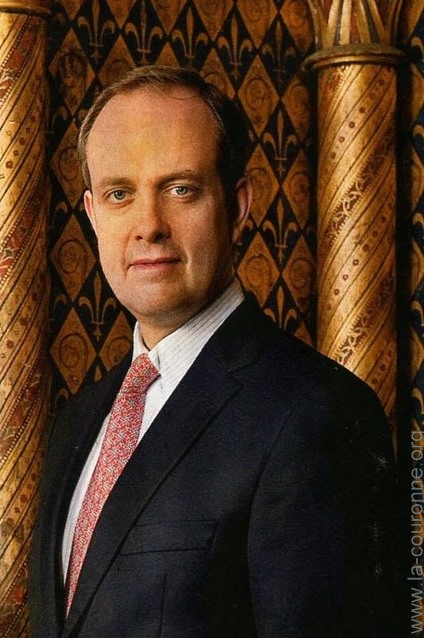
Jean d’Orléans, Count of Paris (Current Pretender of the now-defunct French Throne)
Sources:
https://en.wikipedia.org/wiki/Template:Pretenders_to_the_French_throne
https://www.sylmpedia.fr/index.php/Henri_VI (It's in French, but it has good pictures of the royal family)
*I've wanted to write a post about the French Monarchy in TL-191 for quite a while now ever since I learned how inaccurate Dr. Turtledove made it out to be.
Note: This is a more realistic version of who would rule the Kingdom of France in TL-191. If you're expecting a Charles XI and a Louis XIX, you're not going to read about them. Sorry.

Flag of Actionist France
France was defeated in the First Great War in 1917. This would be the second time since the Franco-Prussian War that France lost against Germany, although their historic enmity stretches back since the 16th Century. The French nation suffered from severe reparations imposed by Germany and the cession of some its territories around the world, such as the entire land of Alsace-Lorraine and some of its colonies in Africa and the Americas. Disillusioned with the military defeat and economic disaster under the establishment of the French government, an Ultra-Royalist organization named Action Française, wanted to transform the Third French Republic into a kingdom, under the control of the House of Orléans.
The House of Orléans has an interesting history within the disputes of royal succession to the French throne. One house among many, the House of Orléans was one of three major groups who claimed to be the rightful monarch of France. After the death of Louis XVIII of France under the Bourbon Restoration, the next King was a younger brother of both Louis XVI and Louis XVIII: Charles X. He ruled from 1824-1830 and then abdicated after the Second French Revolution (July Revolution). Charles X was the last ruling King of France from the House of Bourbon and was succeeded by his cousin, Louis Philippe, who was from the House of Orléans. Despite initial popularity with the people and agreeing to rule France as a constitutional monarch, his lack of success with improving his own country would eventually lead to him being deposed during the Revolutions of 1848. The Second French Republic was proclaimed, then the Second French Empire under Napoleon III, and later the Third French Republic.
Throughout the 1920’s, there was civil unrest in France and was made worse when the stock market crashed. By the beginning of the 1930’s, another revolution occurred and France became a monarchy once again, but this time under the House of Orléans, despite complaints from the Legitimists and Bonapartists. In theory, the monarchy was a limited one, but would eventually become more absolute up until France surrendered in 1944 during the Second Great War.
The King of the French, as he was called, was Jean III and ruled from 1930-1940. His son Henri VI became the next King and would only rule for four years until his death during the Paris Bombing in 1944. A regent on behalf of the son of Henri VI, Henri VII, was able to negotiate peace with Germany.
Throughout the existence of the Kingdom of France under the Orléanists, the King was able to improve his country's economy and sense of national pride. Strong relations with Britain, Russia, and the Confederacy allowed France to be involved in future plans against the victors of the First Great War. The popularity of the demand of plebiscites in the Confederacy in North America, Austria-Hungary and other parts in Europe compelled the French kings to demand that Germany allow the people in previously French territory to decide for themselves who they wanted to be ruled under. When the demand was refused, France, along with its allies, would enter into a war that would cause the end of the French monarchy.
.jpg)
Jean III, King of the French

Three generations of the House of Orléans (From Left to Right: Henri VI, Henri VII, and Jean III)

Henri VI with Charles Maurras

Henri d'Orléans, Count of Paris, Duke of France (Orléanist pretender to the now-defunct French throne from 1944-2019)

Jean d’Orléans, Count of Paris (Current Pretender of the now-defunct French Throne)
Sources:
https://en.wikipedia.org/wiki/Template:Pretenders_to_the_French_throne
https://www.sylmpedia.fr/index.php/Henri_VI (It's in French, but it has good pictures of the royal family)
*I've wanted to write a post about the French Monarchy in TL-191 for quite a while now ever since I learned how inaccurate Dr. Turtledove made it out to be.
Last edited:
In all honesty given that the 20th Century French Monarchy of Timeline-191 is part of a purely Fascist Regime AND winds up getting Paris flattened by an Atomic Bomb, I'd argue Doctor Turtledove was quite sensible to avoid using any actual French Aristocrats in his novels - just in case some aristo decides this constitutes a defamation of character and tries to persuade the Fifth Republic to rebuild the Bastille, all for the sake of consigning poor Harry to its darkest depths!
On a more serious note, please allow me to compliment you on producing the proper Orléanist Succession for our consideration; the only genuine quibble that occurs to me regarding this article is that the title "King of the French" might trigger a major Diplomatic protest from the Germans - or something worse - given that the title indicates a National, rather than a purely Territorial monarchy (In other words a monarchy that implicitly claims the French King should rule all Frenchmen, everywhere, and not just those who live within the present borders of France).
In other words exactly the sort of threat against whom the Germans would launch a preemptive strike, for the sake of avoiding ANOTHER Franco-German war fought over the provinces lost in 1870 & 1914. With that in mind, I would suggest the title of the SOUTHERN VICTORY French Monarch (20th Century) would be "Jean III, by the Grace of God and by the Constitutional Law of the State, King of France" rather than King of the French.
If this seems a vaguely petty sort of Diplomatic dispute then you're not entirely wrong, but it should still be noted that Royal Titles have whipped up something more dangerous to the Peace of Europe than a mere storm in a teacup ...
On a more serious note, please allow me to compliment you on producing the proper Orléanist Succession for our consideration; the only genuine quibble that occurs to me regarding this article is that the title "King of the French" might trigger a major Diplomatic protest from the Germans - or something worse - given that the title indicates a National, rather than a purely Territorial monarchy (In other words a monarchy that implicitly claims the French King should rule all Frenchmen, everywhere, and not just those who live within the present borders of France).
In other words exactly the sort of threat against whom the Germans would launch a preemptive strike, for the sake of avoiding ANOTHER Franco-German war fought over the provinces lost in 1870 & 1914. With that in mind, I would suggest the title of the SOUTHERN VICTORY French Monarch (20th Century) would be "Jean III, by the Grace of God and by the Constitutional Law of the State, King of France" rather than King of the French.
If this seems a vaguely petty sort of Diplomatic dispute then you're not entirely wrong, but it should still be noted that Royal Titles have whipped up something more dangerous to the Peace of Europe than a mere storm in a teacup ...
The French nation suffered from severe reparations imposed by Germany and the cession of some its territories around the world, such as the entire land of Alsace-Lorraine and some of its colonies in Africa and the Americas.
Not bad, but Alsace-Lorraine were already part of Germany at the time of GW1; had been since Bismarck was in power.
Not bad, but Alsace-Lorraine were already part of Germany at the time of GW1; had been since Bismarck was in power.
Clarification: Based on what I read about the region, there were some parts of Alsace-Lorraine that were still under French control.
The Germans would most likely want to take the rest of what remains to France.
Imperial Russian Forces fighting off Ottoman forces, Caucasus, 1942. While The Russian Empire's main thrust was aimed at the German Empire and Austria-Hungary, the Tsar did not forget its historical rivalry and war in the first Great War, as well as the aim to support the Armenians. However, the much larger, but hodgepodge of foreign designs slapped onto an ill-equipped army going up the Ottoman smaller, but well-organized motorized force, (trained by US and German advisors and equipped with modern, up-to-date machine and American and German made Barrels and some locally constructed.) and add the fruitful Oil industry in the Persian and Mesopotamian regions of the Turks, allow the Ottoman Empire to push back against the Russian Bear after heavily fighting in the mountains and hillside.
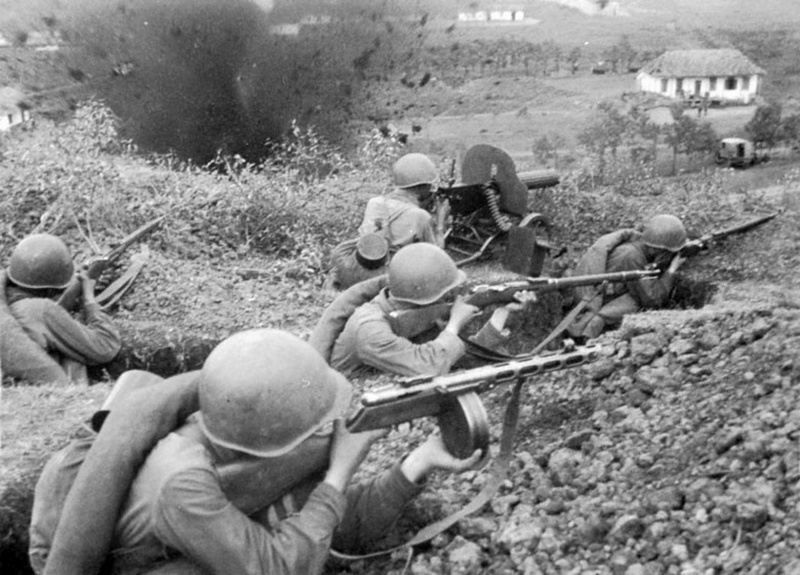
(Thanks to @rvbomally and Soundwave3591 for giving me the idea to show some of the Russian-Ottoman fights.)

(Thanks to @rvbomally and Soundwave3591 for giving me the idea to show some of the Russian-Ottoman fights.)
Pittsburgh At Peace: 1935-1941
Before the Second Great War, Pittsburgh was one of the United States' largest cities, with a bustling metropolitan population centered around industrial jobs. It accounted for a significant portion of the United States' steel output and attracted European immigrants over the decades for the employment opportunities offered in working in the steel industry. Small black communities were dotted across the city, usually centered around the steel factories, as the few black workers who could manage to find jobs usually found work as unskilled laborers in the steel mills. The non-hispanic white population still made up a significant portion of the city's demographics.
Manufacturing was always a key to the growth of Pittsburgh and the surrounding region. Railroad lines and well developed paved roads were built into the city along both rivers, increasing transportation access to important markets. Downtown Pittsburgh was the sprawling heart of the city, with financial offices, businesses, and entertainment centers lighting up the skyline.
Air pollution was always major health concern for residents of the city and clouds of smog from the factories was not an uncommon sight. As the war began in ernest and factory output in Pittsburgh climbed dramatically to meet the needs of the war, the air quality took a significant dive. Even as Confederate forces closed in, fighting their way into the city itself as Confederate bombers pounded the industrial centers, smog and smoke from the factories and numerous fires caused by bombing became a major hindrance for Confederate aerial reconnaissance of the area.

^^^ --- Downtown Pittsburgh skyline, 1930s.

^^^ --- A view of "The Point" and Central Downtown Business Area, 1930s. The tall buildings in this area were immediately identified by both sides as potential strategic points of interest as well as advantageous observation points. Snipers and small squads brave enough to climb these tall buildings risked much as artillery and air strikes often bombarded these areas if they could not be taken. A few of the tallest buildings in Pittsburgh were completely flattened by the end of the fighting.

^^^ --- Downtown Pittsburgh on a foggy and rainy day, 1930s

^^^ --- Pittsburgh on smoggy "day", 1930s. From the images here, it is hard to tell whether it night or day, or even if there is fog or smog in the air.

^^^ --- Two men have a smoke break on a busy corner in Downtown Pittsburgh, 1930s. Again, it is hard to tell whether there is fog or smog in the air.

^^^ --- On sunny days when the smog was minimal, life in Pittsburgh continued as usual, with people going about their busy daily lives. Even during the night, Downtown was usually bustling with activity. During the Battle of Pittsburgh, downtown was completely devastated.

^^^ --- Away from the downtown area, wide streets sporting many shops, restaurants, and convenience stores were open to the public. During the Battle of Pittsburgh, streets like this were often devastated and the twisted wreckage of neon signs, cars, and telephone lines added a hazardous and surreal aspect to the fighting.

^^^ --- Slums of Pittsburgh. It was in these areas of the city that some of the most bitter fighting occurred between US and CS forces. They were also home to city's small black population. Reports from the fighting suggest that small groups of "camouflaged death-squads" often combed these areas and summarily executed the few black residents that remained.

^^^ --- Steel factory in Pittsburgh. Even as fighting engulfed the city, with factories routinely bombed by Confederates, work inside the factories continued on, with tanks, shells, bullets, and anything essential for the war effort were rolled off the assembly lines straight into the fighting. With tactical and strategic importance not lost on the Confederates, skirmishes and battles over the numerous factories around the city were often some of the bloodiest fighting in the battle, with steel-workers and US soldiers often barricading these areas and turning them into makeshift fortresses of twisted steel and smoke.
Before the Second Great War, Pittsburgh was one of the United States' largest cities, with a bustling metropolitan population centered around industrial jobs. It accounted for a significant portion of the United States' steel output and attracted European immigrants over the decades for the employment opportunities offered in working in the steel industry. Small black communities were dotted across the city, usually centered around the steel factories, as the few black workers who could manage to find jobs usually found work as unskilled laborers in the steel mills. The non-hispanic white population still made up a significant portion of the city's demographics.
Manufacturing was always a key to the growth of Pittsburgh and the surrounding region. Railroad lines and well developed paved roads were built into the city along both rivers, increasing transportation access to important markets. Downtown Pittsburgh was the sprawling heart of the city, with financial offices, businesses, and entertainment centers lighting up the skyline.
Air pollution was always major health concern for residents of the city and clouds of smog from the factories was not an uncommon sight. As the war began in ernest and factory output in Pittsburgh climbed dramatically to meet the needs of the war, the air quality took a significant dive. Even as Confederate forces closed in, fighting their way into the city itself as Confederate bombers pounded the industrial centers, smog and smoke from the factories and numerous fires caused by bombing became a major hindrance for Confederate aerial reconnaissance of the area.
^^^ --- Downtown Pittsburgh skyline, 1930s.
^^^ --- A view of "The Point" and Central Downtown Business Area, 1930s. The tall buildings in this area were immediately identified by both sides as potential strategic points of interest as well as advantageous observation points. Snipers and small squads brave enough to climb these tall buildings risked much as artillery and air strikes often bombarded these areas if they could not be taken. A few of the tallest buildings in Pittsburgh were completely flattened by the end of the fighting.
^^^ --- Downtown Pittsburgh on a foggy and rainy day, 1930s
^^^ --- Pittsburgh on smoggy "day", 1930s. From the images here, it is hard to tell whether it night or day, or even if there is fog or smog in the air.
^^^ --- Two men have a smoke break on a busy corner in Downtown Pittsburgh, 1930s. Again, it is hard to tell whether there is fog or smog in the air.
^^^ --- On sunny days when the smog was minimal, life in Pittsburgh continued as usual, with people going about their busy daily lives. Even during the night, Downtown was usually bustling with activity. During the Battle of Pittsburgh, downtown was completely devastated.
^^^ --- Away from the downtown area, wide streets sporting many shops, restaurants, and convenience stores were open to the public. During the Battle of Pittsburgh, streets like this were often devastated and the twisted wreckage of neon signs, cars, and telephone lines added a hazardous and surreal aspect to the fighting.
^^^ --- Slums of Pittsburgh. It was in these areas of the city that some of the most bitter fighting occurred between US and CS forces. They were also home to city's small black population. Reports from the fighting suggest that small groups of "camouflaged death-squads" often combed these areas and summarily executed the few black residents that remained.
^^^ --- Steel factory in Pittsburgh. Even as fighting engulfed the city, with factories routinely bombed by Confederates, work inside the factories continued on, with tanks, shells, bullets, and anything essential for the war effort were rolled off the assembly lines straight into the fighting. With tactical and strategic importance not lost on the Confederates, skirmishes and battles over the numerous factories around the city were often some of the bloodiest fighting in the battle, with steel-workers and US soldiers often barricading these areas and turning them into makeshift fortresses of twisted steel and smoke.
Last edited:
Imperial Russian Forces fighting off Ottoman forces, Caucasus, 1942. While The Russian Empire's main thrust was aimed at the German Empire and Austria-Hungary, the Tsar did not forget its historical rivalry and war in the first Great War, as well as the aim to support the Armenians. However, the much larger, but hodgepodge of foreign designs slapped onto an ill-equipped army going up the Ottoman smaller, but well-organized motorized force, (trained by US and German advisors and equipped with modern, up-to-date machine and American and German made Barrels and some locally constructed.) and add the fruitful Oil industry in the Persian and Mesopotamian regions of the Turks, allow the Ottoman Empire to push back against the Russian Bear after heavily fighting in the mountains and hillside.

(Thanks to @rvbomally and Soundwave3591 for giving me the idea to show some of the Russian-Ottoman fights.)
Fronts like this would be hotly contested by both sides, yet probably overlooked by TL-191 historians in the years to come, depending on who is telling the history of course.
I like this! Seems the Ottomans can truly hold their own now in this timeline.
Share: